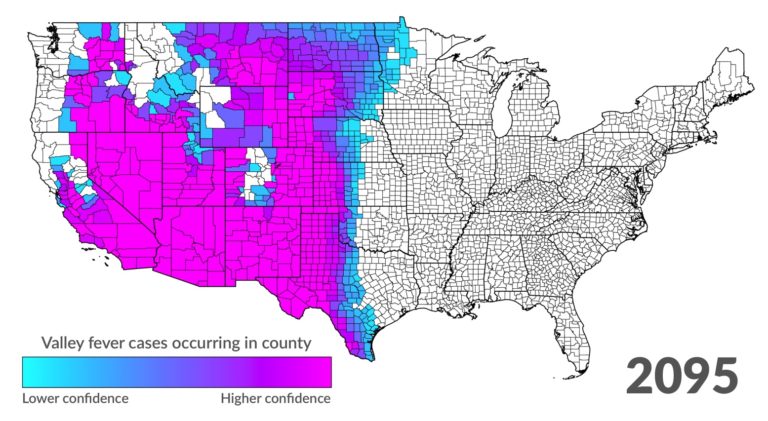
Back in May, UC Irvine Ecology and Evolutionary Biology Professor Kathleen Treseder presented a lecture to the public on how climate change is making much of the western United States–including Orange County–far more hospitable to dangerous fungal spores, like those that cause Valley Fever. On Sept. 16, UCI announced that the American Geophysical Union GeoHealth had published a paper on the very findings Treseder had spoken about.
“The range of Valley fever is going to increase substantially,” said lead author Morgan Gorris, a former UCI PhD student in Earth system science who was awarded her doctorate in August, in a Sept. 16 UCI press release. “We made projections out to the end of the 21st century, and our model predicts that Valley fever will travel farther north throughout the western United States, especially in the rain shadow of the Rocky Mountains and throughout the Great Plains, and by that time, much of the western U.S. will be considered endemic. Both temperature and precipitation are expected to change considerably in the western U.S. in future decades, but it’s the increasing temperatures in already dry states that allow the disease to spread.”
In addition to Gorris and Treseder, UCI Earth systems sciences professor Charles Zender and James Randerson, UCI Chancellor’s Professor and Ralph J. and Carol M. Cicerone Chair in Earth System Science, also co-authored the paper.
Here’s a summary of findings from the paper:
Valley fever is a fungal disease most common in the southwestern United States. Generally, the disease is limited to areas that are hot and dry. Climate change will cause the western US to become hotter and may change the location, timing, and amount of rain. This is likely to change which counties are affected by Valley fever. We used climate observations to estimate which counties in the US have a higher risk for Valley fever. Then, we used predictions of future climate to map which counties may become affected by Valley fever during the remainder of the 21st century. By 2100, our model predicts the area affected by Valley fever will more than double and the number of people who become sick will increase by 50%. The area affected by Valley fever will expand north into drier states in the western US, including Idaho, Wyoming, Montana, Nebraska, South Dakota, and North Dakota. Our estimate may help public health officials develop more effective plans so less people suffer from this disease.
About 40 percent of those who inhale the Valley fever fungal spores become sick. Early symptoms are very similar to the flu, which is why the disease can easily be misdiagnosed. Roughly five percent of those who contract Valley fever will develop a severe form that leads to brain swelling. The disease is fatal to about one percent of those who get it.
Click here to read the GeoHealth paper.
Click here to read our story on Treseder’s May 15 lecture.
Anthony Pignataro has been a journalist since 1996. He spent a dozen years as Editor of MauiTime, the last alt weekly in Hawaii. He also wrote three trashy novels about Maui, which were published by Event Horizon Press. But he got his start at OC Weekly, and returned to the paper in 2019 as a Staff Writer.


Valley fever isn’t just a concern for humans. Your dog can get it as well, and it can be fatal if not treated.
https://vcahospitals.com/know-your-pet/valley-fever-in-dogs